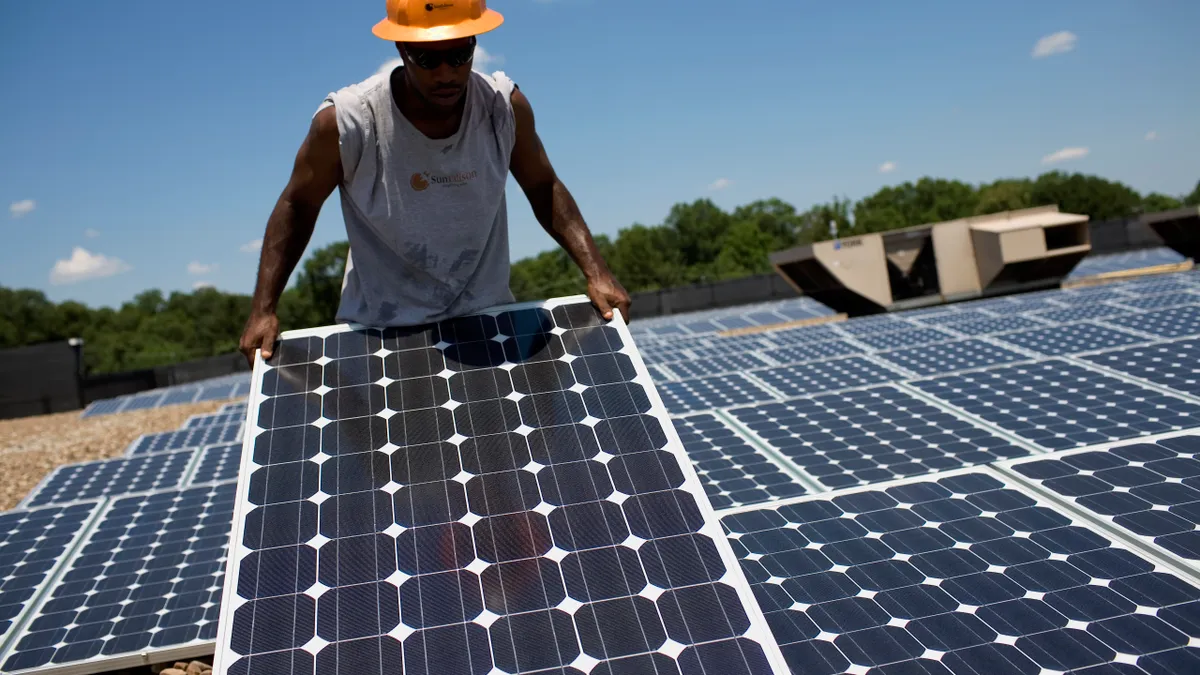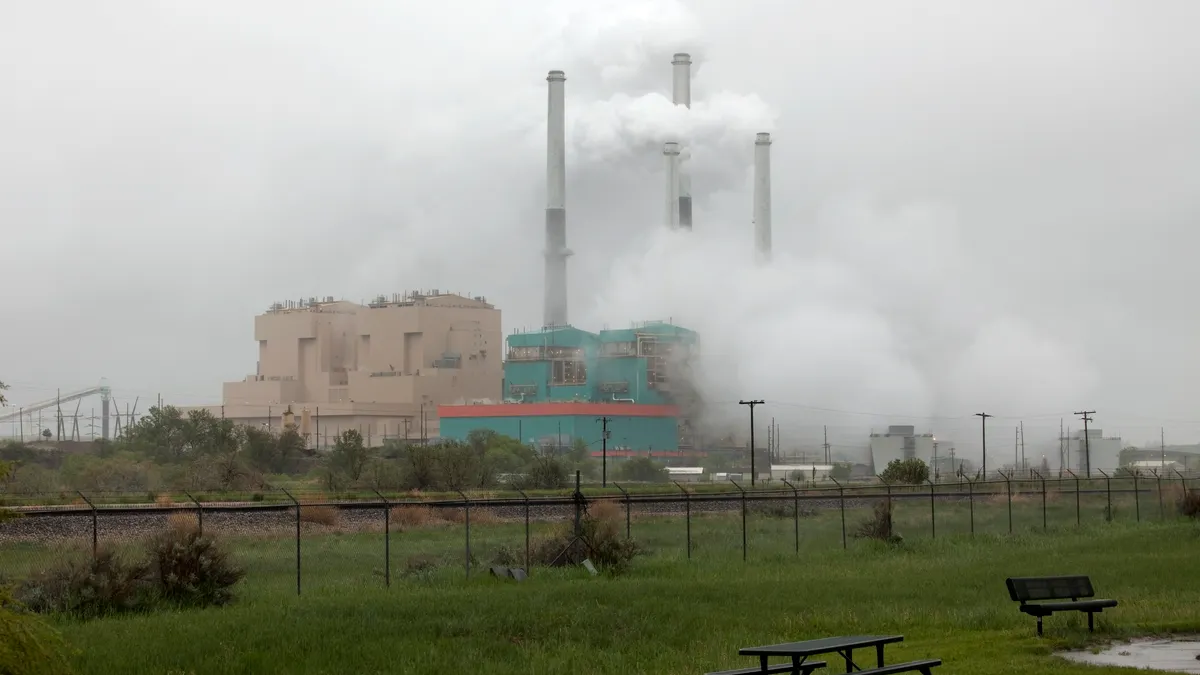States, competitive market groups and other stakeholders criticized a federal proposal to overhaul the Public Utilities Regulatory Policies Act (PURPA), in comments filed Tuesday, questioning the potential impacts those changes could have to the country's renewable energy momentum.
Stakeholders, including the Federal Trade Commission (FTC) and Electric Power Supply Association (EPSA) raised concerns that the notice of proposed rulemaking (NOPR) issued by the Federal Energy Regulatory Commission in September would unduly impact states outside regulated power pools. Meanwhile, states participating in regional transmission organizations (RTOs) and independent system operators (ISOs) had their own concerns about the potential impacts of the proposed rule.
Eight attorneys general joined by two state regulators stretching across diverse markets and utility service models submitted comments laying out their concerns that FERC would be overstepping its authority in making these changes, something legal and renewables groups had argued as well. The states also raised concerns that the rules could harm renewables deployment in their states and others.
Overhauling PURPA has been a longstanding goal of FERC Chair Neil Chatterjee, who says the proposed rules are intended to give states more flexibility in implementing the 1978 federal law and more accurately reflect the realities of a low-cost renewables market.
Dozens of utilities filed comments in support of the proposed changes, including Duke Energy, Pacific Gas & Electric, Consumers Energy and Xcel Energy. Those companies largely supported the comments of their trade association, the Edison Electric Institute (EEI), which argued that utility customers are obligated to pay "significantly more" for power under PURPA than they would have to otherwise.
Top concerns raised by advocates and states were the uncertainty that a live market price for renewables as opposed to a fixed price under PURPA would bring to facilities, the potentially crippling effects of the reduced MW threshold facilities need to hit in order to qualify for funding and the idea that FERC did not sufficiently vet the idea of truly competitive pricing for qualifying facilities (QFs) across different regions. Other states said the rules would bring long-awaited relief to regulators.
Live vs. fixed prices
Concerns raised by competitive interests and several states were that FERC's proposal to allow state regulators to let the markets work rather than set fixed prices would create uncertainty for developers and discourage development.
"You're leaving a renewable developer to potentially just get a contract for energy at a variable rate, which may not be enough to actually build the project," Jessica Bell, clean energy attorney at New York University's State Impact Center told Utility Dive. "I think that's a pretty problematic part."
Others noted not allowing renewables to receive fixed prices is hypocritical because traditional generators are not held to the same standards, indicating the model was not economically sustainable for small producers.
"[T]he NOPR would allow states to remove a qualifying facility's option for a fixed contract without any similar restriction on incumbent utilities that enjoy long-term revenue security," FTC Commissioner Rebecca Kelly Slaughter wrote in her comments.
Particularly for western, non-competitive regions where PURPA is one of the only ways small facilities can compete in the market, the change could be potentially devastating.
Without "PURPA safeguards" in those regions, there is concern qualifying facilities (QFs) might not be able "to compete on a level playing field with resources owned by incumbent electric utilities," the EPSA wrote in its comments.
"[T]here is little basis for drawing a direct comparison between merchant generators participating in an organized capacity market and qualifying facilities seeking to develop in states that are not part of an organized market," wrote the Oregon PUC.
"In Oregon and much of the West, resource development generally occurs through" long term power purchase agreements through utilities, and those procurements are not done based on "as-available energy prices, raising questions about the accuracy of the assumptions supporting the Commission's proposal in many areas of the West."
Pro-NOPR entities in unregulated regions
But some states in those regions saw the proposed rules as much needed relief. Implementing PURPA in Montana's unregulated region dominated by NorthWestern Energy has become "more and more unmanageable," wrote the state's Public Service Commission (PSC) in its comments. The commission complained it has had to deal with rates and contracts for over 700 MW of QFs, consuming around a quarter of total hours worked by its employees.
Montana regulators have long fought the rule, and in June 2017, a commissioner was caught on tape acknowledging that the low avoided cost rate they set for QFs would effectively kill small solar in the state.
Idaho also has "a pretty tormented history with PURPA," Public Utilities Commissioner (PUC) Kristine Raper said at a regulatory conference last month. A large part of the state's issues are with disaggregation — where larger facilities split in order to qualify for the avoided cost rate under PURPA.
"I believe manipulation of PURPA implementation can be mitigated by granting as much discretion as possible to the states within reasonable parameters established by FERC," Idaho Gov. Brad Little, R, wrote in his comments.
One state where the conflict between regulatory, clean energy and utility interests was abundantly clear was in North Carolina — while Duke supported the proposed changes, the state's utilities commission public staff and attorney general (AG) both raised concerns with the proposal and how it would unduly impact the unregulated part of its state.
The AG's office was one of the 10 state attorneys general around the country to jointly write to FERC, but also wrote separately that two of the proposed changes were especially concerning in their potential impact to the state's renewables industry — which boasts the most QFs under PURPA in the country. The one mile rule — which would allow utilities to argue that facilities less than 10 miles apart could constitute a single facility — is geographically restrictive, the office wrote, and the price mechanisms could discourage financing.
"[T]he risk of overpayment to QFs should also be viewed in the context of a utility's long-term commitment to build plants, whereby generation investment decisions are based upon uncertain forecasts that could result in ratepayers bearing the same type of forecast risk from utility plants as they do from QFs," the public staff wrote.
Duke maintains that customer overpayment is a concern, because "[o]utput from QFs is purchased regardless of economics," spokesperson Phil Sgro told Utility Dive in an email, in contrast with the utility's resource procurement which "is subject to continual review and reassessment."
Regulated state concerns
But even within regulated states, there are concerns about how the changes could impact QFs. Part of FERC's proposal is to lower the megawatt threshold QFs need to meet in order to secure PURPA financing from 20 MW to 1 MW. Stakeholders say this new threshold ignores the difficulties small facilities have in competing in regulated markets.
"Smaller QFs, 20 MW and under, still don't have open access to those markets," Advanced Energy Economy Managing Director and General Counsel Jeff Dennis told Utility Dive. "There's a lot of barriers to their ability to participate. So that was one place where we said competition is still not complete in that area and PURPA still has a role."
AGs from Massachusetts, Delaware, the District of Columbia, Maryland, Michigan, New Jersey, North Carolina, Oregon and regulators from New Jersey and Rhode Island all wrote to FERC, raising concerns with a number of issues, including the 1 MW rule.
"[R]educing the rebuttable presumption that some QFs lack nondiscriminatory market access from 20 MW to 1 MW may ultimately impede a state from incorporating cost-effective renewable and low-carbon generation facilities of nameplate generation capacity less than 20 MW into its resource mix," the states wrote. Massachusetts AG Maura Healey wrote that changing the threshold would reduce the number of qualifying facilities, which would reduce project financing, ultimately making those resources more expensive for customers, discouraging renewables deployment and harming the state's clean energy goals.
AGs are "interested in making sure that the state's policies and laws to promote clean energy are robustly preserved and can be attained in harmony with that desire to protect consumers," said Bell. "And what we're seeing with this NOPR from FERC is the potential unraveling of sort of a key statute that was intended to accomplish that very goal."
Correction: This article has been updated to clarify it was the North Carolina utilities commission public staff who is opposed to parts of the proposed PURPA changes.






















